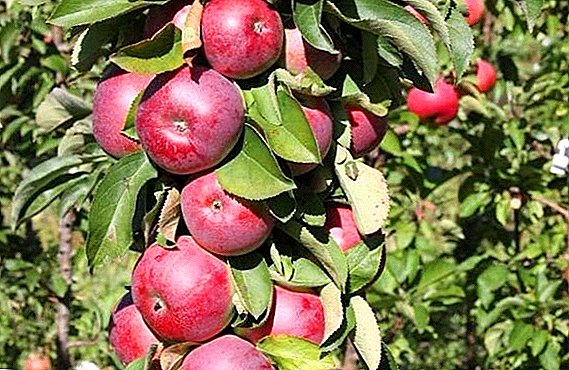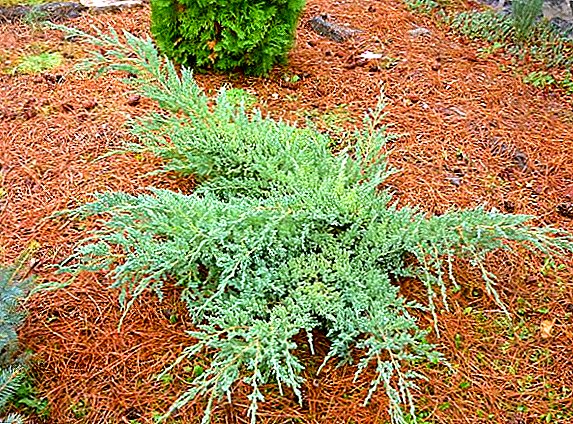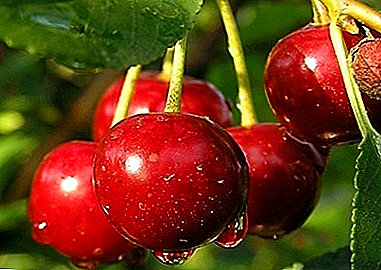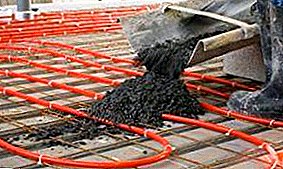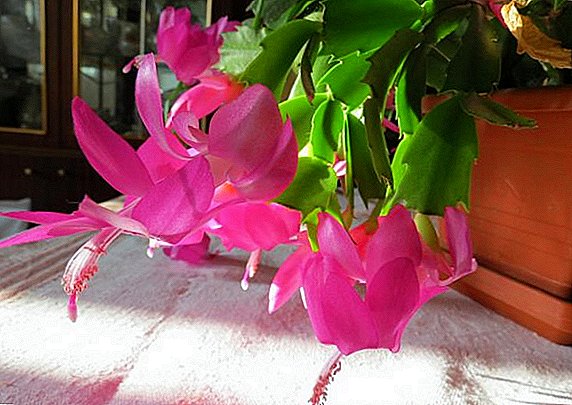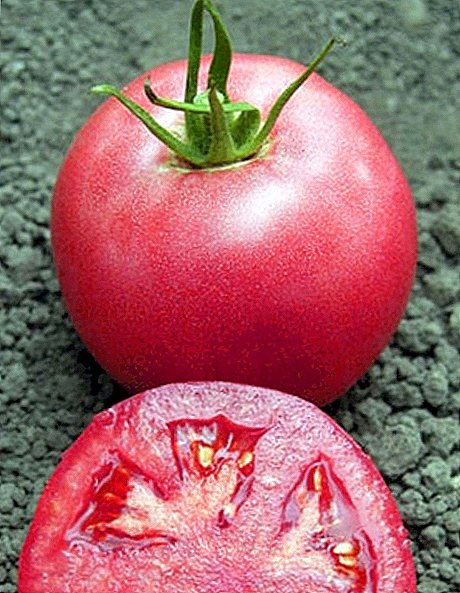 For those who cultivate the land and harvest it, the various bugs, moths, butterflies and caterpillars do not arouse affection, admiration for the creation of nature or any romantic associations. Insects in the beds or in the field - a threat to crops and crops, which means - enemies.
For those who cultivate the land and harvest it, the various bugs, moths, butterflies and caterpillars do not arouse affection, admiration for the creation of nature or any romantic associations. Insects in the beds or in the field - a threat to crops and crops, which means - enemies.
Here it is important to know the adversary, what is called, in person: understand who exactly is threatening and how to deal with it.
Malicious bugs are very beautiful and cause admiring sighs, while being a formidable enemy, capable of causing considerable damage. For example, brilliant rapeseed, better known under the name "rapeseed flower eater". This article is devoted to this hero and fight with him.
Pest description
Rapeseed flower beetle refers to the glistening beetles of the beetle order. According to its malignancy, it shares the first place with the cruciferous flea.
The larva of rapeseed tsimoeda is light gray, covered with black warts. It has a brown head and three pairs of legs.
Learn how to get rid of ants, golden-eyed, whitefly, weevil, aphids, locusts, spider mites at their summer cottage.
The adult beetle is painted black with a metallic bluish or greenish hue. The legs are brown in color. Sizes range from 1.5 to 2.5 cm.  The pest overwinters in the soil, and when the air warms up to 11 ° C, it is chosen outside. The insect is quite resistant to cold, and over the summer the flower beetle can produce 2, and in the southern lands - and all 3 generations.
The pest overwinters in the soil, and when the air warms up to 11 ° C, it is chosen outside. The insect is quite resistant to cold, and over the summer the flower beetle can produce 2, and in the southern lands - and all 3 generations.
As the first victims, he chooses early-flowering plants, or rather, only their inflorescences. Both beetles and larvae prefer flowers in the budding stage, devouring all their elements, moving as the buds form to other plants.
Important! It would be more correct to call the beetle flower beetle because the bud affected by the pest does not make it to flowering. Only buds untouched by glitter, which she did not have time to reach, because the period of its harmfulness had ended, are able to bloom. And this period ends at about the end of June, while the peak falls around mid-June. With this information, you can vary the time of planting and processing plants, to knead the formidable pest in time.
The brilliant flowers are eaten by cruciferous plants - cultivated and weeds, giving preference, as the name implies, to rapeseed.
Rapeseed flower beetle is found almost everywhere: in Europe, Asia, Africa, North America.
Approximately in April the female of the pest lays eggs on winter crops, gnawing in the bud. After 2 weeks, the larvae appear, which after a week go to the ground and pupate there. The new generation is ripening by July. Larvae are able to develop only in the flowers of cruciferous plants, which are otherwise called cabbage cultures. 
Important! The bug eats in the bud the pistil and stamens, the petals, takes a bite of pollen and in the same place lays the eggs from which the larvae that feed on the bud develop.
The development of tsvetkoeda occurs in one generation. New generation, which appears by July, is scattered in search of food in order to gain fat and weight, in order to winter and gain strength to devour the harvest of the next year.
What is the danger?
The harmfulness of the rapeseed flower beetle is that it damages the cruciferous buds, causing damage to the seed material. Even if the flower develops further, the seeds in it will be deformed and unsuitable for use. 
Important! With a large invasion of rapeseed brilliance can destroy up to 70% or more of seed.
The degree of damage to the plant depends on the phase of its development. Beetle-beaten bud will suffer more than a blooming flower. Harvesting culture is very difficult irregularly completed flowering.
Conducting a hidden lifestyle, the tsvetogoy sneaks into the bud, eating holes in it. His further "feast" is not limited to devouring pollen, he eats the ovary, and after - sepals and stalks. Bud turns yellow, dries and falls.
Did you know? The plant canola is not found in the wild, and as a cultural about it was known for 4 thousand years BC. er There is an assumption that canola - the product of the crossing of cabbage and winter rape.
If the larvae are not very large, they inflict relatively small harm to peduncles compared to adult beetles. But if the larvae in the bud are not less than 5, they eat away not only the pollen, but also everything that is inside the flower, and then settle on the adjacent buds. Having dealt with them, the voracious larvae are taken for escapes and young pods.  Cruciferous cultures, devouring which, the insect does damage:
Cruciferous cultures, devouring which, the insect does damage:
- rape;
- cabbage;
- radish;
- mustard;
- radish;
- watercress;
- horseradish;
- daikon;
- turnip
- apple blossom;
- cherry color;
- sugar beet;
- poppy;
- buttercup;
- umbrella;
- asteraceae and others.
 In general, they bring a lot of trouble to gardeners, vegetable growers and gardeners.
In general, they bring a lot of trouble to gardeners, vegetable growers and gardeners.Signs of rapeseed tsieroeda
Signs of damage to crops with rapeseed are similar to signs of wilted buds for physiological reasons under stress conditions:
- temperature too high;
- lack of moisture;
- nutritional deficiencies.
It is easy to distinguish the causes of wilting: withering plants have a stem length of not more than 1 cm, and it is thin. If the stem is well developed and has grown above 1 cm, and the buds fall away - it is you who are honored by the presence of rapeseed flower beetle, which is already treated, eating the contents of the buds.  There are methods for calculating the extent of damage to seedlings by the beetle and other insects based on the statistical method.
There are methods for calculating the extent of damage to seedlings by the beetle and other insects based on the statistical method.
Did you know? From the rapeseed field in hectares, bees can produce up to 50 kg of honey.
Methods of control and prevention
Rapeseed flower beetle is a serious pest that damages agriculture on all continents. There are a number of means to combat it, and new, more effective ones are being developed.
At the moment, the most effective is an integrated approach that provides the most reliable protection.
The following methods of combating complement each other, being a system of protection with rapeseed gloss. Natural regulatory factors enter into combat with the pest first, and when the threshold of harm comes, chemical methods are added to ensure success. The latter should be applied taking into account environmental and economic standards. 
Important! It is possible to overcome the brilliant rapeseed with preventive measures, tracking the number of insects and immediately switching to a chemical attack if it increases its performance, approaching a dangerous threshold.
When developing a plant protection strategy, consider:
- population size;
- the time when the pest appeared;
- phase of seedling development;
- plant density
 Overwhelmed adult beetles are more dangerous. If you are late with the measures of radical reaction, you can lose up to 70% of the sown, and it is not at all uncommon.
Overwhelmed adult beetles are more dangerous. If you are late with the measures of radical reaction, you can lose up to 70% of the sown, and it is not at all uncommon.Did you know? The homeland of rape has not yet been established. According to some assumptions, it can be Holland or England, according to others - it is considered to be a native of the Mediterranean.
How to prevent?
It has long been known that prevention will be easier and cheaper than treatment. Prevention measures against rapeseed flower beetle:
- spring - careful removal of weeds, with which the pest can begin its spring activity;
- in the autumn - cleaning of the vegetation cover, which can be used as a shelter for winter;
- compliance with the rules and technologies when carrying out agrotechnical works;
- maximum early sowing of seeds in order to outrun the time of egg laying in buds with early flowering;
- constant soil loosening near the cruciferous plants, which will prevent the process of pupation of the larvae;
- spraying on time with special formulations.
 In conditions of early spring, warm weather sets in quickly and for a long time. At such a time, earlier flowering is possible, and, accordingly, an earlier opening of the buds, anticipating the maturation of the eggs and the release of the larvae from them. The eggs often die and the plants will be damaged to a lesser extent. Late larvae devouring the pods in the absence of flowers are a great evil.
In conditions of early spring, warm weather sets in quickly and for a long time. At such a time, earlier flowering is possible, and, accordingly, an earlier opening of the buds, anticipating the maturation of the eggs and the release of the larvae from them. The eggs often die and the plants will be damaged to a lesser extent. Late larvae devouring the pods in the absence of flowers are a great evil.How to get rid?
Effective chemical way to get rid of the pest. When it is discovered that the field or vegetable garden is infected with rapeseed flower bead, chemical treatment is used. Efficiency is recognized for:
- pyretoids;
- neonicotinoids;
- organophosphorus compounds;
- insecticides.
 Thus, in one fell swoop you can destroy, in addition to the rapeseed flower beetle:
Thus, in one fell swoop you can destroy, in addition to the rapeseed flower beetle:- aphid;
- rapeseed leaf beetle;
- rapeseed sawfly and others.
In a small area, not too infected with a bug, you can use the mechanical method, collecting insects by hand. Better to do it in the morning.  There are biological methods of struggle, implying the attraction of natural enemies of the sparkle - entomophages, which are:
There are biological methods of struggle, implying the attraction of natural enemies of the sparkle - entomophages, which are:
- spiders;
- takhin;
- ground beetle;
- softness;
- tsenellyd;
- staphylanide and others.
Other, alternative methods of dealing with a beautiful but harmful beetle continue to be developed and tested.  There is no doubt that the rapeseed flower beetle is a serious and formidable opponent, losing the fight against which can cost the crop. However, there are ways to influence it, and they are quite effective, especially if these measures are applied in combination. Armed with knowledge, every farmer is able to resist a brilliant pest.
There is no doubt that the rapeseed flower beetle is a serious and formidable opponent, losing the fight against which can cost the crop. However, there are ways to influence it, and they are quite effective, especially if these measures are applied in combination. Armed with knowledge, every farmer is able to resist a brilliant pest.


